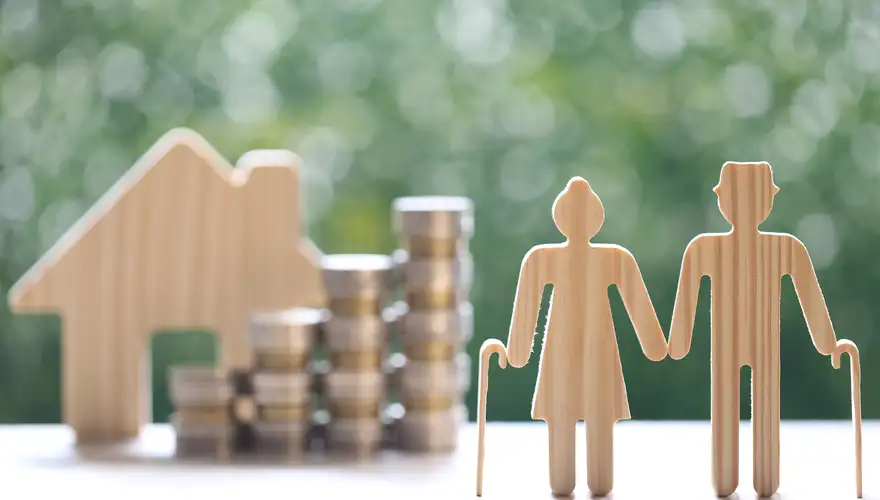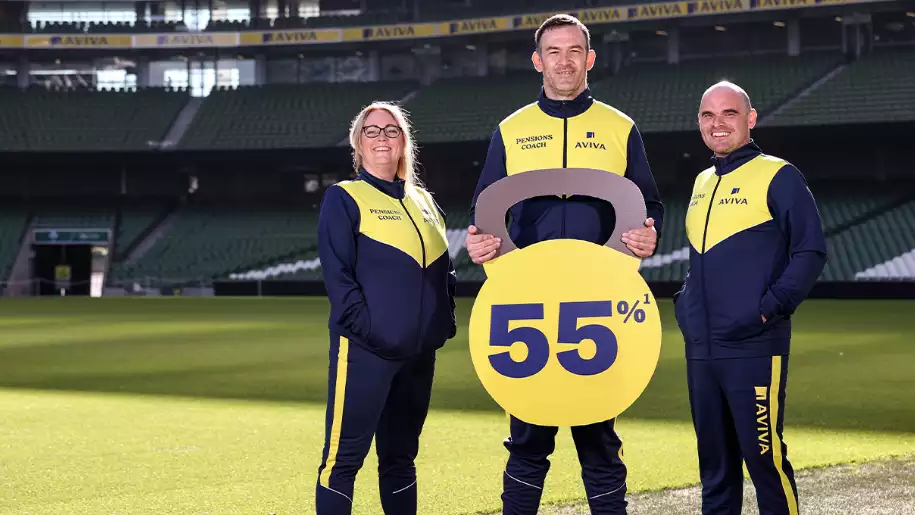Q1: I’m self-employed. How much can a pension contribution reduce my tax bill by?
A1: If you are self-employed and pay tax at 40 per cent and you make a pension contribution of €10,000 then this will reduce your tax bill by €4,000.
Q2: Is there a limit to how much of my earnings I can contribute and for which I can claim tax relief?
A2: Yes, there are Age-related contributions limits that apply to pension contributions made by individuals (whether you are self-employed or a member of a company pension scheme), as follows:
| Age attained in relevant tax year: | Age-related percentage limits: |
| Under 30 years | 15% |
| 30-39 years | 20% |
| 40-49 years | 25% |
| 50-54 years | 30% |
| 55-59 years | 35% |
| 60 years or over | 40% |
Q3: Is there an earnings cap?
A3: Yes, for 2022 and 2023 the maximum earnings that qualify for personal tax relief (by the self-employed, those in non-pensionable employment or members of company pension schemes) is €115,000, for all ages.
Q4: What if I am an employee in a company pension scheme?
A4: The same limits apply. You can make personal contributions but it’s worth noting that if you are in a company pension scheme, the limits (based on your age and/or the Earnings Cap) apply to the total of your employee’s contributions and Additional Voluntary Contributions (AVCs). Any contributions by the employer can be paid in addition to these employee limits.
So, for example, where someone under 30 wishes to top up an employer’s scheme, where there is a compulsory employee contribution of 5 per cent, it means that there is scope for an AVC of up to 10 per cent on top of that Employee Contribution.
Q5: So, what is an AVC?
A5: AVCs are Additional Voluntary Contributions to a company pension scheme that are over and above the amount an employee is required to contribute under the scheme rules.
AVCs qualify for tax relief at your marginal rate, so if you pay tax at the 40 per cent rate then that’s the tax relief.
The Age-related limits shown in the above table also apply so, for example, tax relief for contributions for someone aged under 30 is 15 per cent of their net relevant earnings.
Q6: Why should I consider making an AVC?
A6: Apart from the tax relief savings, if you’re a member of a company pension scheme, you can make Additional Voluntary Contributions to increase the size of your pension pot at retirement.
Q7: What if I am an Employee and my Employer makes a pension contribution on my behalf to a Personal Retirement Savings Account (PRSA)?
A7: Since 1st January 2023, any contributions made by an Employer to a Personal Retirement Savings Account (PRSA) is no longer regarded as a Benefit-in-Kind. Furthermore it does not form part of the Age-Related limits referred to above.
In this situation the above Age-Related limits still apply for Employees but any contributions by the Employer can be paid in addition to these Employee limits.
Q8: How do I claim the tax relief for pension contributions?
A8: You can adjust your tax credits online through Revenue.ie.
If contributions are being made on a regular basis, adjusting your tax credits through Revenue MyAccount gives you tax relief in the current tax year.
Q9: What about self-employed people – when or how can they backdate tax-relief on a pension contribution?
A9: At this time of the year a lot of self-employed people will finalising their tax return for 2022. If they make a lump sum pension contribution they can elect to backdate the tax relief to 2022 as part of their tax return to Revenue, and use the backdated tax relief to reduce any tax due for 2022.
If you are self-employed, and you have paid a certain amount of tax for 2022, you can do it as part of your tax return, to help reduce the amount of tax you pay for 2022. Such contributions are normally paid into a Personal Pension or a Personal Retirement Savings Account (PRSA).
Q10: For how many years can I backdate pension contributions?
A10: The pension contribution itself is based on the date when it is actually paid. But in certain situations it is possible to backdate the tax relief on such a pension contribution. If a contribution is paid after the end of the year, but on or before 31 October of the following year, tax relief may be claimed for the previous year provided an election to do so is made by the individual on or before 31 October of the following year. So, in effect, it is only possible to backdate the tax relief to the previous tax year, provided this is done before the respective deadlines.
Taxpayers who file and pay online via ROS or myAccount may avail of the Revenue’s extended return filing and payment date to make an election and pay a contribution. As the payment of a qualifying contribution is a pre-condition to the availability of relief, an election cannot be made in advance of such a payment.
The income tax return deadline for the Revenue Form 11 (Income Tax Return and Self-Assessment for the year 2022) for 2022 income is the 31st October, 2023.
For those who have registered for Revenue Online Services (ROS) and choose to file and pay their taxes online, the extended ROS deadline is 15th November 2023.
Q11: Can unused tax relief be carried forward?
A11: Yes, where full relief cannot be given for a year of assessment for contributions paid in that year, the unrelieved amount may be carried forward to the next or succeeding years and treated as a qualifying contribution paid in subsequent years.
Q12: Are there any additional incentives for the self-employed to make a pension contribution and backdate the tax relief?
A12: The good thing about pension contributions for self-employed people is that you can reduce your tax bill for the previous year, and in doing so can also reduce the preliminary tax due for the current year. If the actual tax bill you have for 2022 is reduced, your preliminary tax bill for 2023 is also reduced, so that’s a double benefit when you are starting a pension.
Q13: When should I make a lump sum contribution?
A13: Any lump sum pension contribution (Self Employed or AVC) must be made before the tax deadline – and the election to backdate the tax relief to the previous tax year must also be made before the tax deadline.
The income tax return deadline for the Revenue Form 11 (Income Tax Return and Self-Assessment for the year 2022) for 2022 income is the 31st October 2023. For those who have registered for Revenue Online Services (ROS) and choose to file and pay their taxes online, the extended ROS deadline to file is 15th November 2023.
The corresponding back-up documentation (e.g. Pension Tax Certificate) as evidence of the pension payment must also be provided and/or uploaded to Revenue in advance of these deadlines, depending on how you file and pay your tax return.
Q14: Are pension funds hit with capital gains tax?
A14: No, the investment growth by the pension fund is not subject to tax (on the investment income or capital gains earned by the pension fund). However, income tax may be levied on pension benefits taken during retirement.
Q15: On retirement, how much of my pension will I receive tax free?
A15: For self-employed people or those in non-pensionable employment, if they have a Personal Pension or PRSA, they can take 25 per cent of the accumulated fund as a tax free Retirement Lump Sum. A similar option of 25 per cent is available for members of Defined Contribution Company Pension Schemes (together with an alternative option based on salary and service).
Q16: Is there a limit on the lump sum you can take?
A16: Yes. In all cases there is a lifetime limit on the overall Retirement Lump Sum that can be paid tax free and this is currently €200,000. So, if you have €1m in your pension pot, 25 per cent is €250,000, so you are €50,000 over that limit. That €50,000 is not tax free, but it is taxed at 20 per cent, so it’s still low.
Q17: What if I’ve a variety of pension pots?
A17: That €200,000 is a lifetime cap for your retirement lump sum. If you’ve got different pots, it’s cumulative (includes any lump sums paid from foreign/overseas pension arrangements since 1st January 2023).
Q18: What happens once I’ve taken my 25 per cent tax free retirement lump sum?
A18: The balance of the retirement pot must, subject to various Revenue rules, be transferred to an Approved Retirement Fund (ARF) or be used to purchase a lifetime annuity.
Withdrawals from an ARF or pension instalments from an annuity are taxable at your marginal rate of tax.
Q19: Why do pensions get such favourable tax treatment?
A19: The Government is asking people to put money away for a long time. It has to make it attractive for them to do that.
Source: Zurich Life, 02/10/2023.
How we help
We can help take the effort out of this for you by demonstrating how this would work for you and your family and providing you with one cohesive Holistic Lifestyle Financial Plan.
You can arrange a meeting by clicking here to access my diary, email info@smartfinance.ie or call 087 8144 104.







